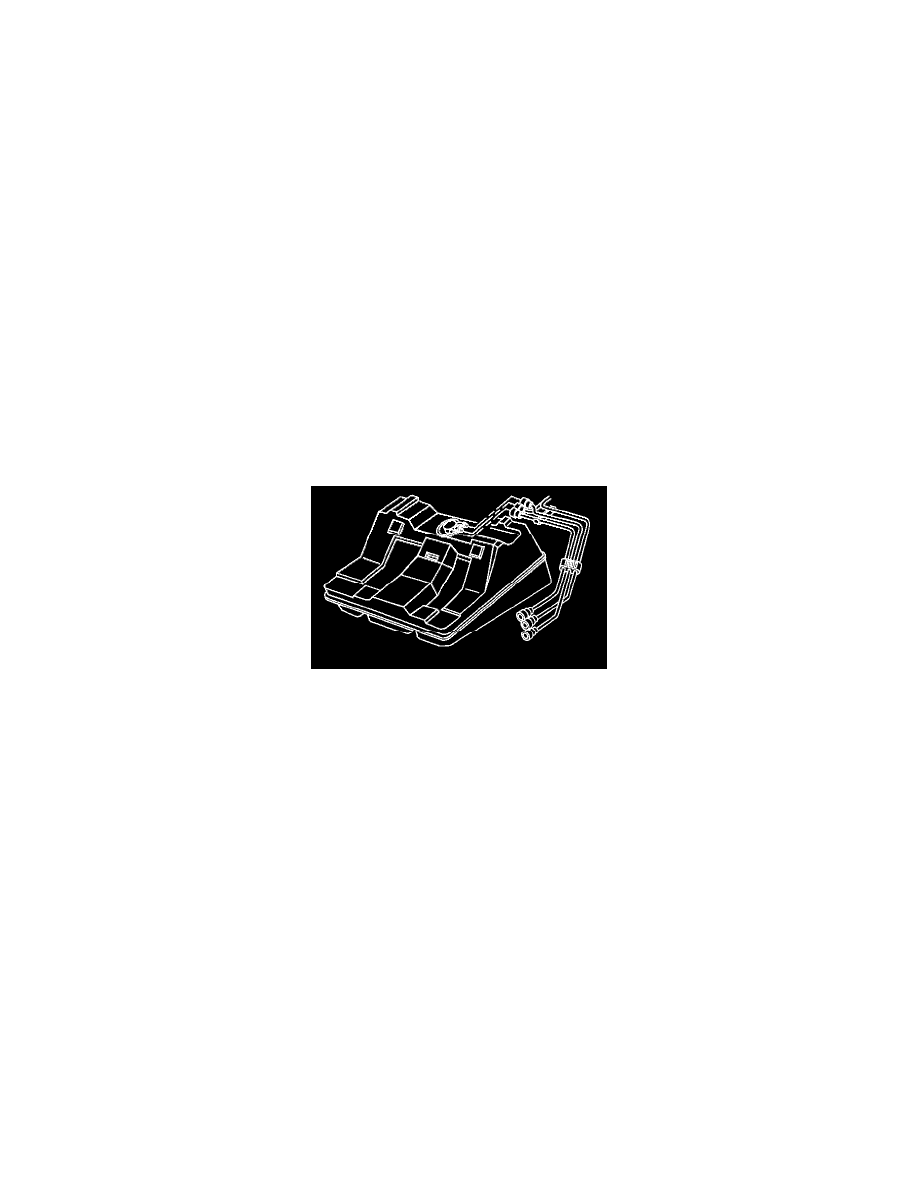Monte Carlo V6-3.8L SC VIN 1 (2004)

Fuel Supply Line: Service and Repair
Fuel Hose/Pipes Replacement - Filter to Tank
FUEL HOSES/PIPES REPLACEMENT - FILTER TO TANK
REMOVAL PROCEDURE
CAUTION: In order to Reduce the Risk of Fire and Personal Injury:
-
If nylon fuel pipes are nicked, scratched or damaged during installation, Do Not attempt to repair the sections of the nylon fuel pipes.
Replace them.
-
When installing new fuel pipes, Do Not hammer directly on the fuel harness body clips as it may damage the nylon pipes resulting in a
possible fuel leak.
-
Always cover nylon vapor pipes with a wet towel before using a torch near them. Also, never expose the vehicle to temperatures higher
than 115°C (239°F) for more than one hour, or more than 90°C (194°F) for any extended period.
-
Before connecting fuel pipe fittings, always apply a few drops of clean engine oil to the male pipe ends. This will ensure proper
reconnection and prevent a possible fuel leak. (During normal operation, the O-rings located in the female connector will swell and may
prevent proper reconnection if not lubricated.)
NOTE: Refer to Cover and Plug Openings Notice in Service Precautions.
IMPORTANT: Always maintain cleanliness when servicing fuel system components.
1. Relieve the fuel system fuel pressure. Refer to Fuel Pressure Relief Procedure.
2. Drain the fuel tank. Refer to Fuel Tank Draining Procedure.
3. Raise and support the vehicle. Refer to Vehicle Lifting.
4. Remove the fuel tank.
5. Disconnect the fuel feed, the fuel return, and the evaporative emission (EVAP) pipe quick-connect fittings at the fuel sender assembly.
6. Cap the fuel sender fuel pipes and the in-pipe fuel filter pipes as needed to stop any fuel leakage.
7. Remove the fuel feed and the fuel return pipes from the fuel tank. Note the position of the pipes for installation.
8. Inspect the pipes for bends, kinks and cracks.
9. Repair or replace the pipe or pipes as necessary.
INSTALLATION PROCEDURE
CAUTION: In order to Reduce the Risk of Fire and Personal Injury: If nylon fuel pipes are nicked, scratched or damaged during
installation, they must be replaced.
NOTE:
-
Refer to Fuel System Ground Notice in Service Precautions.
-
Secure the fuel pipes to the frame in order to prevent chafing. Maintain a minimum of 13 mm (1/2 inch) clearance around a pipe in order to
prevent contact and chafing. Maintain a minimum of 19 mm (3/4 inch) around any moving part.
-
Do not allow the fuel pipes to come into contact with the fuel tank or underbody.
1. Install the new fuel feed and the fuel return pipes as noted during removal.
2. Remove the caps from the in-pipe fuel filter pipes and the fuel sender fuel pipes.
